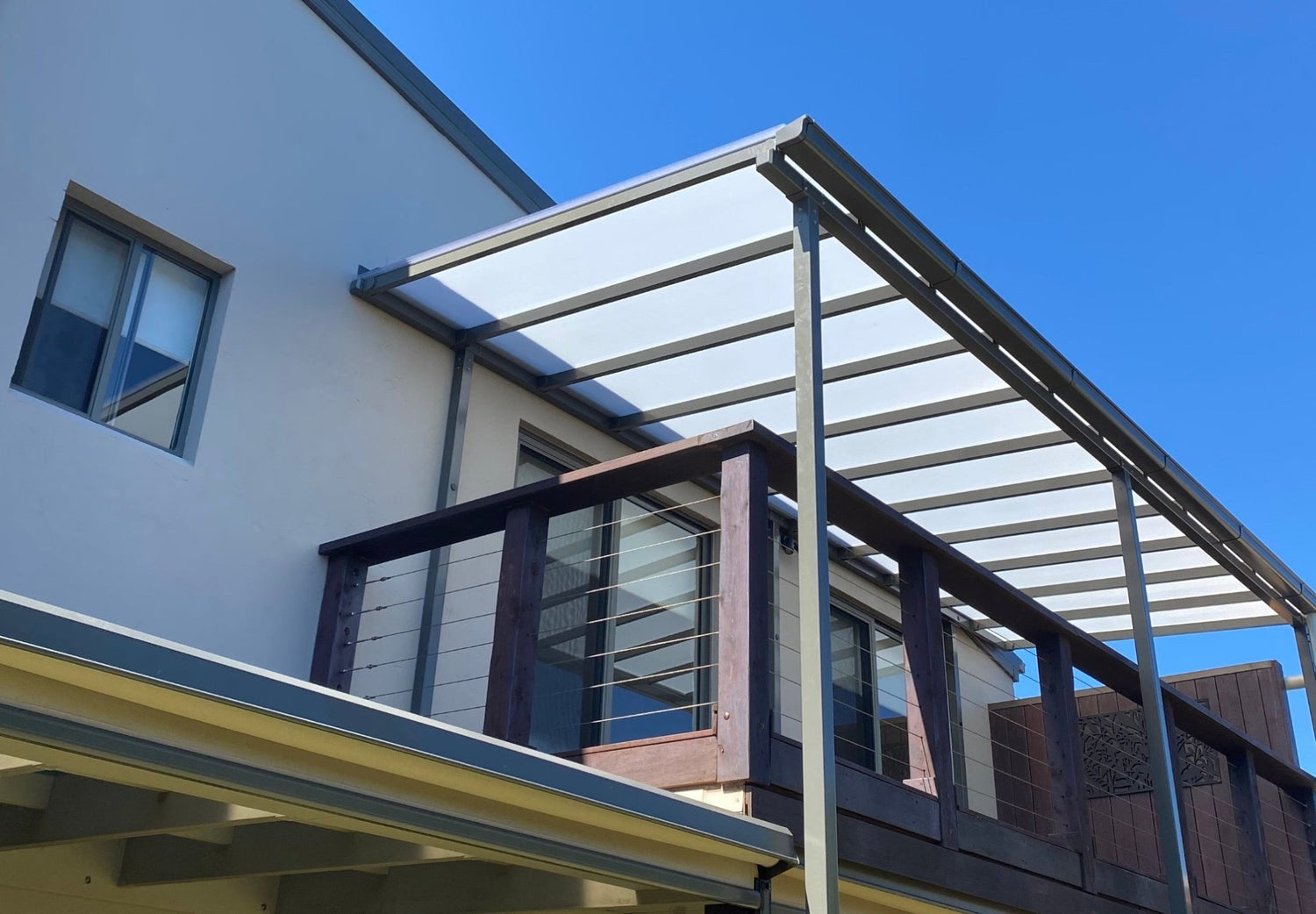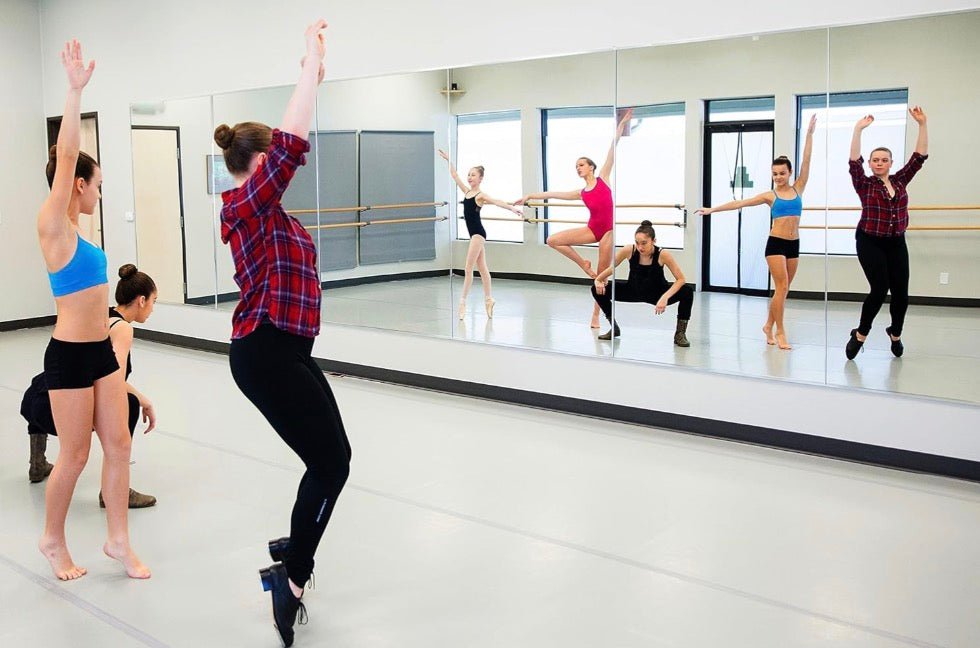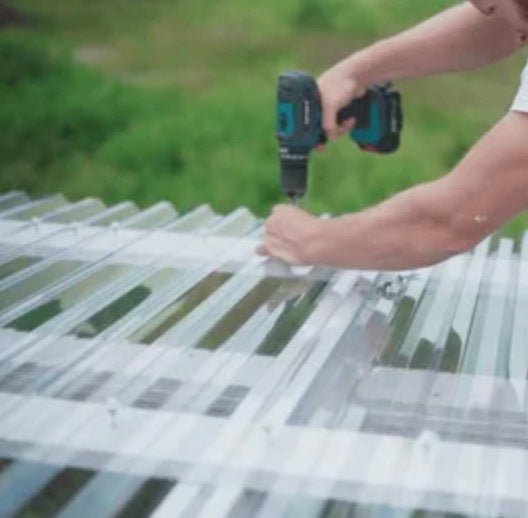Polycarbonate panels have transformed patio roofing by combining strength, light transmission, and weather resistance in ways that are unparalleled in the field of outdoor architectural solutions. In addition to offering resistance to weather conditions, these cutting-edge materials demonstrate exceptional visual adaptability, allowing them to complement a diverse range of design aesthetics. The features of polycarbonate patio roofing make it popular. These materials fit outdoor life.

Outstanding Appearance and Functionality
Polycarbonate roofing is popular because of its extraordinary ability to combine aesthetic appeal with practicality. Polycarbonate, a long-lasting thermoplastic polymer, has a considerable advantage over conventional roofing materials since it enables natural light into outdoor areas while blocking almost all UV radiation. Specifically designed to improve the atmosphere of patios, verandas, and pergolas, this characteristic illuminates and protects while fostering a welcoming, pleasant outdoor space. Along with its adaptability, polycarbonate roofing is known for its lightweight design and easy installation, which contribute to excellent light transmission.
Architectural panels are made with several profiles and hues to suit different tastes. A wide variety of profiles and pigments are available. In addition to enhancing interior comfort, they preserve their structural integrity and visual attractiveness. They are available in a variety of tints and profiles. Due to the ten-year warranty against impact damage and the reputed 250-times-greater strength of polycarbonate, property owners are confident in the material's long-lasting dependability and minimal maintenance requirements.

Maintenance and Care for Longevity
However, maintaining polycarbonate roofing in pristine condition requires rigorous compliance with pre-established maintenance procedures. Regular debris removal and the judicious choice of cleaning agents are critical factors in maintaining the clarity and functionality of these displays. Emphasizing the significance of selecting gentle detergents and soft cleaning implements over abrasive tools or caustic chemicals that may compromise the polycarbonate's integrity. By adhering to this systematic maintenance regimen, not only is the roof's lifespan prolonged, but it also maintains its aesthetic and functional prestige as an enhancement to the outdoor living area.

Varieties of Polycarbonate Roofing
- An extensive range of polycarbonate roofing panels is commercially accessible to accommodate various aesthetic and functional requirements. Foam-backed and multi-wall sheeting comprise these panels.
- Insulated roof panels may replace polycarbonate roofs and offer limited heat protection.
- Methods of Open Roofs: When integrated into open roof designs, polycarbonate panels can provide a harmonious combination of outdoor exposure and indoor comfort, appealing to individuals who value outdoor space and security.
Comparative Analysis with Other Materials
The preference and specifications of the homeowner are apparent in the selection of polycarbonate panels over alternative roofing materials like insulated roofing panels. Polarized light transmission and long-lasting properties of polycarbonate are especially beneficial for those who prioritize weather resistance and the capacity to observe natural light. Attractive to insulated panels, on the other hand, are individuals seeking enhanced thermal efficiency and an appearance reminiscent of interior ceilings. The ultimate criterion for material selection is whether or not it achieves the desired equilibrium among lengthy functionality, aesthetic appeal, and environmental sustainability.
Advantages of Polycarbonate in Modern Construction
Upon further examination of the qualities that distinguish polycarbonate panels as an optimal selection for patio roofs, we reveal a collection of material properties and performance attributes that correspond to the requirements of contemporary buildings. The thermal insulation and superior impact resistance of polycarbonate contribute to its capacity to regulate temperature fluctuations, thus enhancing outdoor comfort and providing protection against severe weather conditions. Further consideration is given to the lightweight properties of the material, which facilitate installation and alleviate structural strain, in addition to its versatility in terms of design and ease of customization. Additionally, the long-term cost-effectiveness of polycarbonate roofing for outdoor living areas supports its investment due to its durability and low maintenance requirements.
Sustainability and Technological Advances
The capacity for customization has expanded due to technological developments in the manufacturing process of polycarbonate panels, which enable the fabrication of exact designs that can adapt to particular architectural concepts. These technological developments support sustainable practices in the building industry through waste reduction, energy efficiency optimization, and the facilitation of tailored roofing solutions. I use innovative materials that provide security and aesthetic appeal, such as polycarbonate panels incorporated into patio roofing ideas, which not only fulfil a practical purpose but also signify a dedication to improving outdoor living.

Conclusion: The Future of Outdoor Architectural Design
Through the successful integration of aesthetic appeal and environmental sustainability, polycarbonate panels represent a paradigm shift in patio roofing. By integrating these materials into outdoor spaces, not only is there a growing trend toward innovative building materials, but there is also a broader shift toward endowing these areas with the same level of warmth and coziness as interior environments. Within the domain of outdoor architectural design, polycarbonate roofing stands out as a prominent illustration of the possibilities that arise from the convergence of innovation and functionality. It offers a structured framework for enhancing the enjoyment and convenience obtained from outdoor areas.



